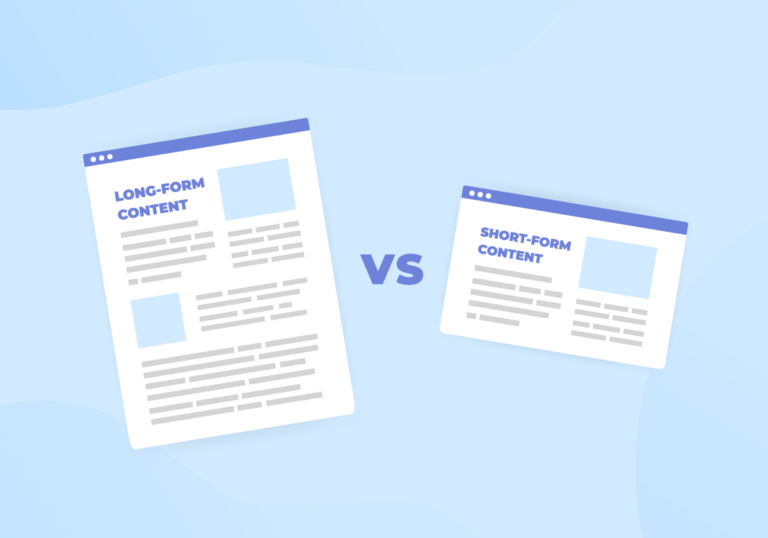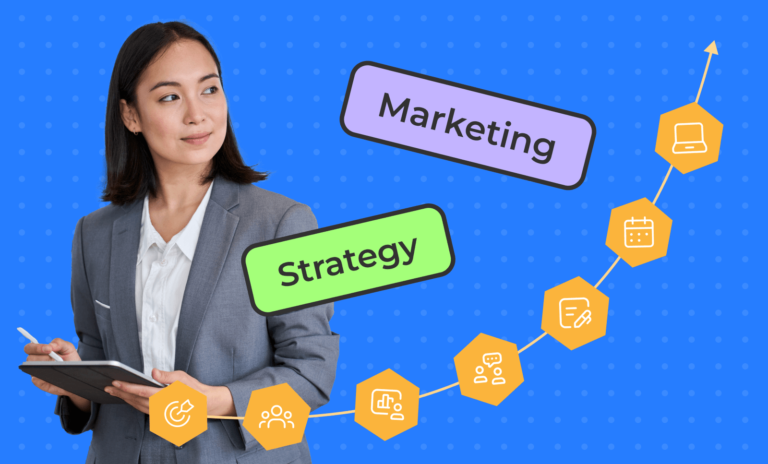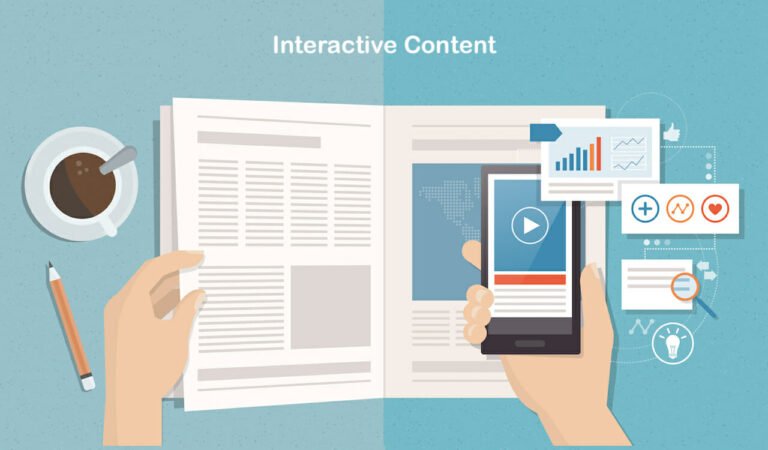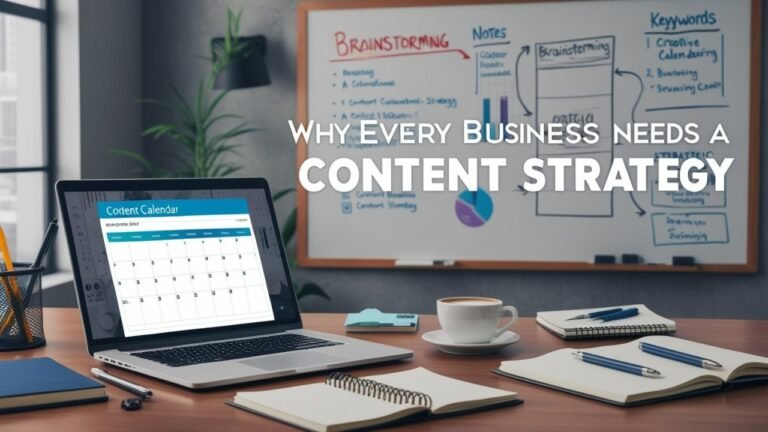How to Start Email Marketing: 10 Things to Consider
In the vast ocean of digital marketing, email marketing stands out as a reliable and potent way to connect with your audience. It’s not just about sending emails; it’s about building relationships, fostering loyalty, and driving sales. Whether you’re new to the game or looking to refine your strategies, understanding the importance and benefits of email marketing is crucial.
Importance of Email Marketing

- Direct Communication: Email marketing provides a direct line to your audience. Unlike social media algorithms, emails land straight in the inbox, ensuring your message gets seen.
- High ROI: Email marketing consistently outperforms other marketing channels in terms of return on investment. For every dollar spent, the average ROI is $42, making it a cost-effective strategy for businesses of all sizes.
- Personalization: Emails can be highly personalized to cater to the individual preferences and behaviors of your subscribers, leading to more meaningful interactions and higher engagement rates.
- Measurable Results: With email marketing, you can track open rates, click-through rates, conversions, and more. This data helps you understand what works and what doesn’t, allowing you to continually optimize your campaigns.
Email marketing is not just a trend; it’s a vital component of a successful digital marketing strategy. As we dive deeper into the steps on how to start email marketing, keep these benefits in mind—they’re the driving force behind why email marketing remains a top choice for marketers worldwide.
I. Understanding Email Marketing
Email marketing can increase overall inbound strategy it is a digital marketing technique that involves sending emails to a targeted group of recipients. It’s a powerful way to communicate with your audience, promote your products or services, and build lasting relationships. Unlike other forms of marketing, email marketing allows for direct and personalized communication, making it an effective tool for driving engagement and conversions. Its significance lies in its ability to reach people directly in their inboxes, providing a personal touch that other digital channels often lack.

1. What is Email Marketing?
Email marketing is a form of direct marketing that uses electronic mail as a means of communicating commercial or fundraising messages to an audience. In its broadest sense, every email sent to a potential or current customer could be considered email marketing. However, the term is usually used to refer to:
- Sending emails with the purpose of enhancing the relationship of a merchant with its current or previous customers and to encourage customer loyalty and repeat business.
- Sending emails with the purpose of acquiring new customers or convincing current customers to purchase something immediately.
- Adding advertisements to emails sent by other companies to their customers.
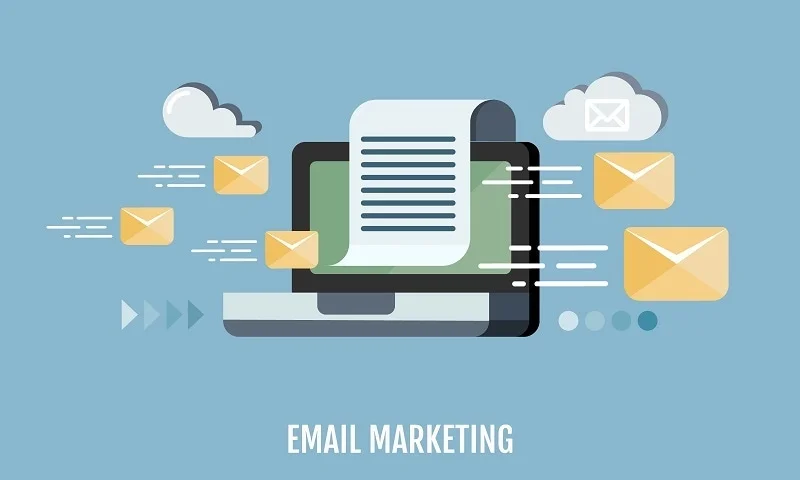
The basic principles of email marketing include building a quality email list, crafting compelling and relevant content, personalizing messages, and analyzing campaign performance to continuously improve results.
2. Benefits of Email Marketing
Email marketing offers a plethora of benefits that make it an indispensable tool for businesses. Here are some key advantages:
- ✓ Direct Access to Audience: Emails land directly in the inbox of your subscribers, offering a personal way to communicate with them.
- ✓ High Return on Investment (ROI): Email marketing is known for its impressive ROI. With minimal costs, businesses can achieve significant returns, making it a cost-effective marketing strategy.
- ✓ Personalization and Segmentation: You can tailor your emails to different segments of your audience based on their preferences, behavior, and demographics, leading to more relevant and engaging content.
- ✓ Measurable Results: Email marketing platforms provide detailed analytics on open rates, click-through rates, conversion rates, and more, allowing you to measure the success of your campaigns and make data-driven decisions.
- ✓ Automation Capabilities: Automation allows you to set up email sequences that are triggered by specific actions or timelines, ensuring timely and relevant communication with your audience without manual intervention.
- ✓ Enhanced Customer Relationships: Regularly reaching out to your audience with valuable content helps build trust and loyalty, encouraging repeat business and long-term customer relationships.
- ✓ Increased Website Traffic: By including links to your website in your emails, you can drive more traffic to your site, which can lead to higher conversions and sales.
Email marketing remains a cornerstone of digital marketing strategies due to its effectiveness, flexibility, and ability to foster strong customer connections.
II. Planning Your Email Marketing Strategy
Planning an effective email marketing strategy is crucial for achieving your marketing goals. It involves setting clear objectives, understanding your target audience, and selecting the right tools and platforms. A well-thought-out strategy ensures that your emails are not only engaging but also reach the right people at the right time. By carefully planning your approach, you can create campaigns that resonate with your audience, drive conversions, and ultimately, grow your business.

3. Define Your Audience
Understanding your target audience is the cornerstone of a successful email marketing strategy. Knowing who your audience is, what they care about, and what challenges they face allows you to tailor your messages to meet their needs and preferences. By defining your audience, you can create more relevant and personalized content, which increases engagement and conversion rates. Here’s how you can define your audience:
- Demographics: Age, gender, income, education level, etc.
- Psychographics: Interests, values, lifestyle, personality traits.
- Behavioral Data: Purchase history, email engagement, website activity.
- Pain Points: Challenges or problems your audience is looking to solve.
- Preferences: Communication preferences, content types they engage with.
4. Establish Your Goals
Setting clear and achievable goals for your email marketing campaigns is essential for measuring success and guiding your strategy. Whether your aim is to increase brand awareness, drive traffic to your website, generate leads, or boost sales, having defined goals helps you stay focused and create targeted campaigns. Clear goals also provide a benchmark against which you can measure your performance. Here are some examples of goals you might set:
- Increase Brand Awareness: Grow your email list and reach new audiences.
- Drive Website Traffic: Encourage recipients to visit your website or specific landing pages.
- Generate Leads: Capture contact information through lead magnets like eBooks or webinars.
- Boost Sales: Promote products, offer discounts, and create time-limited offers.
- Enhance Engagement: Improve open rates, click-through rates, and overall engagement with your emails.
III. Building Your Email List
Building a robust email list is a critical step in your email marketing journey. A quality email list ensures that your messages reach a receptive and engaged audience, increasing the likelihood of successful campaigns.
This involves using various strategies to attract and capture the contact information of potential subscribers who are genuinely interested in your content or offerings. By focusing on organic growth and ethical practices, you can develop a list that not only grows steadily but also consists of individuals who are more likely to convert and become loyal customers.

5. Create an Enticing Opt-In Form
An enticing opt-in form is crucial for converting visitors into subscribers. It’s the gateway to building your email list, so making it attractive and effective is essential. Here are some tips for creating an opt-in form that grabs attention and encourages sign-ups:
- Clear and Compelling Headline: Use a headline that clearly states the value of subscribing. Make it attention-grabbing and concise.
- Simple Design: Keep the form design clean and straightforward. Avoid clutter and focus on essential fields only (e.g., name and email address).
- Strong Call-to-Action (CTA): Use a CTA button that stands out and uses action-oriented language like “Join Now,” “Get Started,” or “Subscribe Today.”
- Offer Value: Highlight the benefits of subscribing, such as exclusive content, discounts, or free resources. Make it clear what subscribers will gain.
- Trust Elements: Include trust signals like testimonials, privacy assurance, and secure icons to make users feel safe about sharing their information.
6. Use Lead Magnets
Lead magnets are valuable resources or incentives offered in exchange for a visitor’s contact information. They are highly effective in attracting subscribers because they provide immediate value. Here’s how to use lead magnets to grow your email list:
- Identify Your Audience’s Needs: Understand what your audience finds valuable and create a lead magnet that addresses their needs or solves a problem.
- Offer High-Quality Content: Your lead magnet should be of high quality and genuinely useful. It could be an eBook, a checklist, a free trial, a discount code, or access to exclusive content.
- Promote Strategically: Place your lead magnet on high-traffic areas of your website, such as the homepage, blog posts, or a dedicated landing page. Use pop-ups, slide-ins, and banners to draw attention to it.
- Make It Easy to Access: Ensure that the process to receive the lead magnet is simple and quick. After submitting their information, subscribers should get immediate access to the resource.
Using enticing opt-in forms and valuable lead magnets can significantly enhance your email list-building efforts, attracting more subscribers who are interested and engaged with your brand.
IV. Crafting Your Email Campaign
Creating compelling email content is at the heart of a successful email marketing campaign. It’s not just about delivering information; it’s about engaging your audience, building relationships, and driving action. Best practices for crafting your email campaign include focusing on clear and concise messaging, using eye-catching visuals, and personalizing content to resonate with your audience. A well-crafted email should capture attention from the subject line to the call-to-action, ensuring your message is not only read but also acted upon.

7. Choose an Email Campaign Type
Selecting the right type of email campaign is crucial to achieving your marketing goals. Different campaigns serve different purposes, and understanding these can help you target your audience more effectively. Here are some common types of email campaigns and their purposes:
- Newsletter: Regular updates sent to subscribers, sharing company news, industry insights, and valuable content. Purpose: Keep your audience informed and engaged.
- Promotional Emails: Emails focused on driving sales by offering discounts, special deals, or limited-time offers. Purpose: Boost sales and revenue.
- Welcome Series: A series of emails sent to new subscribers to introduce them to your brand and set expectations. Purpose: Build a relationship and onboard new subscribers.
- Re-engagement Campaigns: Target inactive subscribers with the goal of reactivating their interest. Purpose: Re-engage and retain subscribers.
- Transactional Emails: Automated emails triggered by specific actions, such as purchase confirmations or password resets. Purpose: Provide essential information and enhance customer experience.
8. Design Your Emails
Design plays a crucial role in the effectiveness of your email campaigns. Visually appealing emails can capture attention and improve engagement rates. Here are some tips for designing effective emails:

- Responsive Design: Ensure your emails look great on all devices, including desktops, tablets, and smartphones. A responsive design adjusts the layout based on the device.
- Visual Hierarchy: Organize your content with a clear visual hierarchy. Use headings, subheadings, and bullet points to make the content scannable.
- Engaging Visuals: Use high-quality images, graphics, and videos to make your emails visually appealing. Ensure visuals are relevant to the content and not just decorative.
- Consistent Branding: Maintain consistent branding elements such as colors, fonts, and logos. This reinforces brand recognition and professionalism.
- Clear CTA: Include a prominent and clear call-to-action (CTA) button. Use contrasting colors to make the CTA stand out and use actionable language like “Shop Now” or “Learn More.”
- Whitespace: Use whitespace strategically to avoid clutter and make your emails easy to read. Whitespace helps emphasize key elements and improves readability.
V. Implementing Email Segmentation
Email segmentation is the practice of dividing your email list into distinct groups based on specific criteria. This approach allows you to send more personalized and relevant emails to each segment, enhancing engagement and conversion rates. Segmentation is crucial because it acknowledges that your subscribers are not a monolithic group; they have diverse interests, behaviors, and needs. By tailoring your messages to these unique segments, you can deliver more targeted and effective email campaigns.
9. Segment Your Email List
Effective email segmentation involves using various strategies to categorize your subscribers into meaningful groups. Here are some strategies for effective email segmentation:

- Demographic Segmentation: Divide your list based on demographic factors such as age, gender, income, education level, or job title. This helps you tailor your content to specific demographic groups.
- Behavioral Segmentation: Segment your audience based on their behavior, such as past purchases, website activity, email engagement, or purchase frequency. This allows you to send emails that match their behavior patterns.
- Geographic Segmentation: Use geographic data such as location, city, state, or country to send location-specific offers, events, or content relevant to their area.
- Psychographic Segmentation: Categorize subscribers based on their interests, values, lifestyles, or personality traits. This helps in creating content that resonates with their attitudes and beliefs.
- Engagement Segmentation: Group your subscribers based on their level of engagement with your emails. For instance, you can create segments for highly engaged users, inactive subscribers, or those who occasionally interact with your emails.
- Lifecycle Stage Segmentation: Segment your audience based on their stage in the customer lifecycle, such as new subscribers, leads, first-time customers, repeat customers, or lapsed customers. This allows you to tailor your messages to their stage in the buying journey.
- Purchase History Segmentation: Use data on past purchases to recommend related products, offer discounts on items they’ve shown interest in, or thank them for their loyalty with special offers.
VI. Testing and Optimization
Continuous improvement is key to a successful email marketing strategy. Testing and optimization allow you to refine your campaigns based on data-driven insights, ensuring that your emails are always performing at their best. By regularly analyzing your email performance and making adjustments, you can enhance engagement, increase conversions, and achieve better results over time.

10. A/B Testing Your Emails
A/B testing, also known as split testing, is a method of comparing two versions of an email to determine which one performs better. This process is crucial for understanding what resonates with your audience and optimizing your emails for maximum impact. Here’s how to effectively conduct A/B testing:
- Identify Variables to Test: Choose a specific element to test, such as subject lines, email copy, images, call-to-action buttons, or send times. Focus on one variable at a time to isolate its impact.
- Create Variations: Develop two versions of your email that differ only in the element you’re testing. For example, if you’re testing subject lines, keep the email content identical but change the subject lines.
- Split Your Audience: Divide your email list into two equal segments. Send one version of the email to the first segment (Group A) and the other version to the second segment (Group B).
- Measure Performance: Track key metrics such as open rates, click-through rates, conversion rates, and other relevant data to evaluate the performance of each version.
- Analyze Results: Determine which version performed better based on the metrics. Use statistical significance to ensure that the results are not due to chance.
- Implement Findings: Apply the insights gained from the A/B test to future email campaigns. Continually test and optimize different elements to refine your strategy over time.
VII. Analyzing Performance
Analyzing the performance of your email campaigns is essential to understand their effectiveness and identify areas for improvement. By measuring key metrics, you can gain insights into how your audience interacts with your emails and what drives engagement and conversions. Regular analysis allows you to make informed decisions and optimize your strategy to achieve better results. Effective performance analysis involves tracking metrics such as open rates, click-through rates, conversion rates, and overall ROI, and using this data to continually refine and enhance your email marketing efforts.

11. Key Metrics to Track
Monitoring the right metrics is crucial for understanding the success of your email marketing campaigns. Here are the key metrics you should track:
- Open Rate: The percentage of recipients who open your email. It indicates how well your subject lines and sender name are performing.
- Click-Through Rate (CTR): The percentage of recipients who click on one or more links in your email. This metric shows how effective your email content and CTAs are in driving engagement.
- Conversion Rate: The percentage of recipients who complete a desired action, such as making a purchase or filling out a form, after clicking on a link in your email. It measures the effectiveness of your email in driving actions that contribute to your goals.
- Bounce Rate: The percentage of emails that could not be delivered to the recipient’s inbox. A high bounce rate can indicate issues with your email list quality.
- Unsubscribe Rate: The percentage of recipients who opt out of your email list after receiving your email. This helps you understand how your content is being received and whether it’s resonating with your audience.
- Spam Complaint Rate: The percentage of recipients who mark your email as spam. Keeping this rate low is essential to maintain your sender reputation and avoid deliverability issues.
- Overall ROI: The return on investment for your email campaigns, calculated by comparing the revenue generated from the campaign to the cost of running it. This gives you a high-level view of the financial performance of your email marketing efforts.
12. Using Analytics Tools
To effectively track and analyze your email performance, using the right tools is essential. Here are some recommended analytics tools for email marketing:
- Google Analytics: Integrate Google Analytics with your email marketing platform to track the behavior of visitors who come to your website from your emails. This helps in understanding how email traffic contributes to your overall website goals.
- Email Marketing Platforms: Most email marketing platforms like Mailchimp, Constant Contact, and Campaign Monitor come with built-in analytics features. These tools provide detailed reports on open rates, click-through rates, conversion rates, and more.
- HubSpot: HubSpot offers comprehensive email marketing and analytics tools, allowing you to track performance, segment your audience, and optimize your campaigns based on detailed insights.
- Litmus: Litmus provides email analytics and testing tools to help you optimize your emails for better engagement. It offers insights into how your emails perform across different email clients and devices.
- Moosend: Moosend offers robust analytics features that track key metrics and provide insights into subscriber behavior, helping you refine your email marketing strategy.
VIII. Ensuring Compliance
Ensuring compliance with legal regulations is a critical aspect of email marketing. Various laws and guidelines govern email marketing practices to protect consumers from spam and ensure their privacy. Compliance not only helps you avoid hefty fines and legal issues but also builds trust with your audience. Key considerations include adhering to regulations like the CAN-SPAM Act, GDPR, and CASL, which mandate obtaining explicit consent from recipients, providing clear opt-out options, and being transparent about your identity and data usage practices. By following these regulations, you can maintain a reputable sender status and foster positive relationships with your subscribers.
13. CAN-SPAM Act
The CAN-SPAM Act sets the rules for commercial email, establishing requirements for commercial messages, giving recipients the right to have you stop emailing them, and spelling out tough penalties for violations. Here’s an overview of the key compliance requirements:
- Don’t Use False or Misleading Header Information: Your email’s “From,” “To,” “Reply-To,” and routing information must be accurate and identify the person or business who sent the message.
- Don’t Use Deceptive Subject Lines: The subject line must accurately reflect the content of the email.
- Identify the Message as an Advertisement: You must clearly and conspicuously disclose that your message is an advertisement.
- Tell Recipients Where You’re Located: Your email must include your valid physical postal address.
- Tell Recipients How to Opt-Out of Receiving Future Emails: Your message must include a clear and conspicuous explanation of how the recipient can opt out of getting emails from you in the future.
- Honor Opt-Out Requests Promptly: Any opt-out mechanism you offer must be able to process opt-out requests for at least 30 days after you send your message. You must honor a recipient’s opt-out request within 10 business days.
- Monitor What Others Are Doing on Your Behalf: Even if you hire another company to handle your email marketing, you can’t contract away your legal responsibility to comply with the law. Both the company whose product is promoted in the message and the company that actually sends the message may be held legally responsible.
14. GDPR Compliance
The General Data Protection Regulation (GDPR) is a regulation in EU law on data protection and privacy. It applies to any business that processes the personal data of individuals within the European Union. Here are the key guidelines for GDPR compliance in email marketing:
- Obtain Explicit Consent: You must obtain explicit consent from individuals before adding them to your email list. This means a clear affirmative action by the subscriber (e.g., ticking an opt-in box).
- Provide Clear and Accessible Information: Inform subscribers about how their data will be used, who will have access to it, and how long it will be kept. This information should be easily accessible and written in clear language.
- Allow Easy Withdrawal of Consent: Subscribers must be able to withdraw their consent as easily as they gave it. Provide clear instructions on how they can unsubscribe or update their preferences.
- Data Minimization: Only collect data that is necessary for the specific purpose you are collecting it for. Avoid gathering excessive data that you do not need.
- Right to Access and Erasure: Subscribers have the right to access their data and request its deletion. You must provide a way for them to exercise these rights.
- Data Security: Implement appropriate technical and organizational measures to protect the data you collect. This includes securing your email marketing platform and ensuring data is stored safely.
- Breach Notification: In case of a data breach, you must notify the relevant authorities within 72 hours and inform affected individuals without undue delay if the breach poses a high risk to their rights and freedoms.
IX. Improving Deliverability
Ensuring high deliverability rates is crucial for the success of your email marketing campaigns. Deliverability refers to the ability of your emails to reach your subscribers’ inboxes rather than being filtered into spam folders or blocked entirely.
To achieve high deliverability, it’s important to follow best practices such as maintaining a clean email list, authenticating your emails, and monitoring your sender reputation. By focusing on these techniques, you can improve the chances of your emails being delivered and seen by your audience, ultimately enhancing engagement and conversions.

15. Avoiding Spam Filters
Avoiding spam filters is essential to ensure your emails reach your subscribers’ inboxes. Here are some best practices to help you avoid being marked as spam:
- Use a Recognizable Sender Name: Make sure your sender name is easily recognizable to your recipients to avoid suspicion and increase open rates.
- Craft a Clear and Honest Subject Line: Avoid deceptive or sensationalist subject lines. Ensure your subject line accurately reflects the content of your email.
- Balance Text and Images: Emails with too many images or an imbalance between text and images can trigger spam filters. Aim for a good balance to avoid this issue.
- Include a Clear Unsubscribe Link: Providing a straightforward way for recipients to opt out helps maintain a clean list and comply with regulations, reducing the likelihood of being marked as spam.
- Avoid Spammy Language: Words and phrases like “free,” “guarantee,” “act now,” and excessive use of exclamation marks can trigger spam filters. Use language that is professional and relevant.
- Authenticate Your Emails: Use SPF, DKIM, and DMARC protocols to authenticate your emails. This proves to email providers that your emails are legitimate and reduces the chances of being flagged as spam.
- Monitor Your Sender Reputation: Your sender reputation affects your deliverability. Keep an eye on it using tools like Sender Score, and take action to resolve any issues that arise.
16. Using Reliable Email Service Providers
Choosing a reliable email service provider (ESP) is crucial for the success of your email marketing efforts. Here’s why it matters:
- Deliverability Rates: Reputable ESPs have established relationships with ISPs and are recognized for their good practices, which helps improve your deliverability rates.
- Compliance: Reliable ESPs ensure compliance with email marketing laws and regulations such as CAN-SPAM and GDPR, protecting you from legal issues.
- Security: A good ESP provides robust security measures to protect your data and your subscribers’ information.
- Analytics and Reporting: Top-tier ESPs offer comprehensive analytics and reporting tools, allowing you to track your email performance and make data-driven decisions.
- Support and Resources: Reliable ESPs offer excellent customer support and resources such as tutorials, webinars, and documentation to help you optimize your email marketing strategy.
- Scalability: As your business grows, a reliable ESP can scale with you, providing advanced features and integrations that support your evolving needs.
X. Enhancing Engagement
Boosting engagement with your email campaigns is vital for maintaining a strong relationship with your subscribers and driving desired actions. Engagement metrics, such as open rates, click-through rates, and conversion rates, are key indicators of how well your audience is responding to your content.
To enhance engagement, focus on creating relevant and valuable content, personalizing your emails, and interacting with your audience in meaningful ways. By employing effective strategies, you can keep your subscribers interested, increase interactions, and achieve better overall results from your email marketing efforts.

17. Personalize Your Emails
Personalizing your emails goes beyond just using the recipient’s name; it involves tailoring the content to meet the specific needs, interests, and behaviors of your subscribers. Here are some tips for personalizing your email content:
- Use Subscriber Data: Leverage data such as purchase history, browsing behavior, and demographic information to create relevant and targeted emails.
- Dynamic Content: Incorporate dynamic content that changes based on the recipient’s preferences or past interactions with your brand.
- Segmentation: Segment your email list into smaller groups based on shared characteristics or behaviors, and send tailored messages to each segment.
- Personalized Recommendations: Offer personalized product recommendations based on past purchases or browsing behavior.
- Anniversary and Birthday Emails: Send special emails on significant dates, such as the subscriber’s birthday or the anniversary of their first purchase with you.
- Behavioral Triggers: Set up automated emails triggered by specific actions, like cart abandonment reminders or follow-ups on previous engagements.
18. Create Compelling Subject Lines
Your subject line is the first thing a recipient sees and can determine whether they open your email. Here are techniques for writing engaging subject lines:
- Keep It Short and Sweet: Aim for subject lines that are concise and to the point, ideally under 50 characters to ensure they display fully on mobile devices.
- Create a Sense of Urgency: Use time-sensitive language to encourage immediate action, such as “Limited Time Offer” or “Last Chance.”
- Ask Questions: Engage readers with questions that pique their curiosity, like “Are You Ready for Summer?”
- Use Numbers and Lists: Incorporate numbers to make your subject lines more specific and eye-catching, such as “5 Tips for Better Sleep.”
- Personalization: Include the recipient’s name or reference something specific to them to create a sense of connection.
- Be Clear and Direct: Ensure your subject line clearly conveys the value or benefit of opening the email.
- A/B Testing: Test different subject lines to see which ones perform best. Use the data to refine your approach and optimize for better results.
Conclusion
Recap of Key Points
Embarking on an email marketing journey can significantly boost your business by fostering stronger relationships with your audience and driving higher engagement and conversions. Here’s a brief recap of the key points we discussed:
- Understanding Email Marketing: Knowing what email marketing is and its significance.
- Planning Your Email Marketing Strategy: Defining your audience and establishing clear goals.
- Building Your Email List: Utilizing enticing opt-in forms and lead magnets.
- Crafting Your Email Campaign: Choosing the right campaign type and designing appealing emails.
- Implementing Email Segmentation: Segmenting your email list for targeted communication.
- Testing and Optimization: Using A/B testing to continuously improve your emails.
- Analyzing Performance: Tracking key metrics and using analytics tools.
- Ensuring Compliance: Adhering to CAN-SPAM and GDPR regulations.
- Improving Deliverability: Avoiding spam filters and choosing a reliable ESP.
- Enhancing Engagement: Personalizing emails and writing compelling subject lines.
Next Steps for Starting Email Marketing
Now that you have a solid understanding of how to start email marketing, it’s time to take action. Here are the next steps to implement your email marketing strategy:
- Define Your Audience and Goals: Clearly identify who your target audience is and what you aim to achieve with your email campaigns.
- Choose an Email Marketing Platform: Select a reliable email service provider (ESP) that meets your needs and offers robust features.
- Build and Segment Your Email List: Create enticing opt-in forms and use lead magnets to grow your list. Segment your list to ensure personalized communication.
- Design and Craft Your Emails: Focus on creating engaging content, compelling subject lines, and visually appealing email designs.
- Set Up and Automate Campaigns: Use automation to send timely and relevant emails based on subscriber behavior and preferences.
- Test and Optimize: Regularly perform A/B tests on various elements of your emails and use the results to optimize future campaigns.
- Analyze Performance and Adjust: Continuously monitor key metrics and use analytics tools to refine your strategy for better results.
- Ensure Compliance: Stay up-to-date with legal requirements and ensure all your practices are compliant with CAN-SPAM and GDPR.
By following these steps, you can effectively start your email marketing journey, engage your audience, and drive significant results for your business. Remember, the key to successful email marketing is continuous learning and adaptation. Start small, track your progress, and refine your approach as you go.

